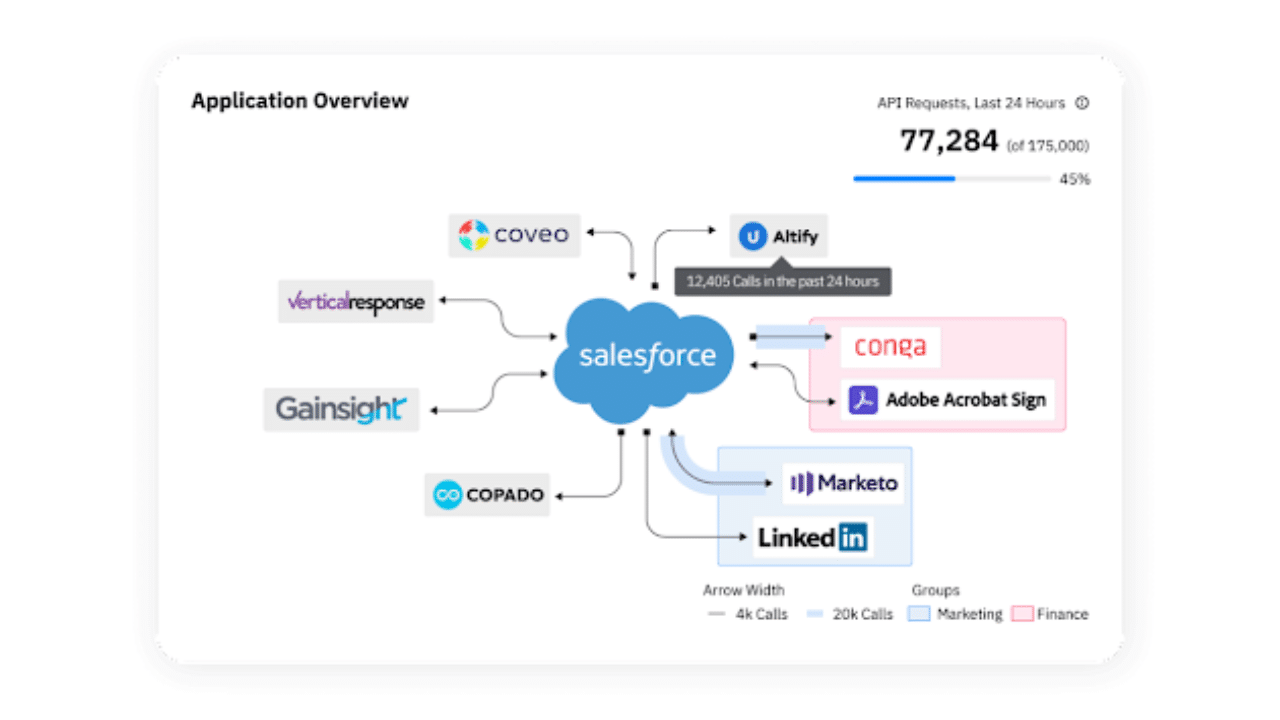5 MIN READ
The Salesforce AppExchange: Why You Need Change Intelligence to Manage Integrations
From managing customer relationships to compiling financial reports, the uses for Salesforce have grown to impact the entire enterprise. A major driver of that evolving utility is the Salesforce AppExchange. Users can choose from thousands of apps that expand their Salesforce capabilities, automate manual processes, and maintain the cleanliness of their database.
What (and Who) You Can Find in the AppExchange
The types of apps offered in the AppExchange are wide-ranging. They can cover simple tasks, like document signing, or automate complex tasks, like reporting. You can also find consulting partners who can help with building, configuring, and optimizing your Salesforce environment. While Salesforce Labs creates a fraction of the apps, most are made by non-Salesforce developers and independent software vendors (ISVs) . ISVs that sell their software services in the AppExchange are part of the Salesforce AppExchange Partner Program. To become a Salesforce ISV, companies must undergo a rigorous evaluation process to ensure they meet high standards for quality and security. Areas of specialty for Salesforce ISVs run the gamut. It should come as no surprise that the most common focus area is Sales, followed by IT & Administration, Human Resources, and Analytics, according to a report by MagicFuse .A Closer Look at Salesforce Integrations
While the AppExchange offers a massive amount of tools that extend the capabilities of Salesforce, it can also add to an already unwieldy tech stack. On average, companies use more than 650 SaaS platforms . Integration is critical to streamlining workflows and preventing errors as data flows between systems. And that integration extends beyond the apps available on the AppExchange – if any of your systems rely on Salesforce to retrieve data (such as financials) or trigger actions (such as restocking inventory), they need to integrate with Salesforce.Why RevOps Teams Need Salesforce Integrations
RevOps teams manage the operations of go-to-market (GTM) departments (typically sales, marketing, and customer success). Salesforce integrations help RevOps teams improve the processes, data quality, and overall collaboration among the functions they work with. Traditionally, there has been friction between GTM teams, often unintended. Although their ultimate goal is to drive revenue, each group may have its own objectives and KPIs to track, which can sometimes conflict with one another. Since many team members are laser-focused on their individual tasks, it can be easy for them to overlook how their decisions impact others across the organization. Because of this, 40% of companies say there’s a disconnect between GTM teams. RevOps teams close the silos between these groups by identifying gaps and redundancies and creating strategies to reduce them. Salesforce integrations are an important part of bridging those silos since they improve collaboration and data sharing between GTM teams. And they provide everyone with better visibility into the activities of their counterparts. Here are some of the top Salesforce integrations for revenue-generating teams.- Chatbots are everywhere these days, and integrating them with Salesforce enables you to maximize their use. If a new lead comes in via a popular chatbot tool like Drift or Qualified, integrations allow you to create a new lead in Salesforce automatically.
- Sales engagement platforms like Salesloft and Outreach centralize sales teams’ interactions with leads and prospects into a single platform. These tools build upon the native functions of Salesforce, so integration is a no-brainer.
- Revenue forecasting apps take the guesswork out of pipeline management by gathering data from Salesforce, emails, call logs, and more. Instead of compiling reports from Salesforce, teams can rely on tools like Clari or Gong to mine the right data and provide clarity on the team’s revenue.
- Marketing automation tools like Marketo and Pardot can connect with Salesforce to send and retrieve lead data, score leads, and improve the handoff between sales and marketing.







